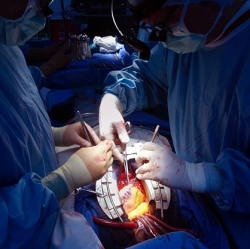
Biomedical engineer Melissa Knothe Tate in Australia is using previously proprietary semiconductor technology to zoom through organs of the human body, down to the level of a single cell. The imaging technology, developed by high-tech German optical and industrial measurement manufacturer Zeiss, was originally developed to scan silicon wafers for defects.
UNSW Professor Melissa Knothe Tate, the Paul Trainor Chair of Biomedical Engineering, is leading the project, which is using semiconductor technology to explore osteoporosis and osteoarthritis.
Using Google algorithms, Tate, an engineer and expert in cell biology and regenerative medicine, is able to zoom in and out from the scale of the whole joint down to the cellular level “just as you would with Google Maps,” reducing to “a matter of weeks analyses that once took 25 years to complete”.
Her team is also using cutting-edge microtome and MRI technology to examine how movement and weight bearing affects the movement of molecules within joints, exploring the relationship between blood, bone, lymphatics and muscle.
“For the first time we have the ability to go from the whole body down to how the cells are getting their nutrition and how this is all connected,” said Professor Knothe Tate. “This could open the door to as yet unknown new therapies and preventions.”
Tate is the first to use the system in humans. She has forged a pioneering partnership with the Cleveland Clinic, Brown and Stanford Universities, Zeiss, and Google to help crunch terabytes of data gathered from human hip studies.
Similar research is underway at Harvard University and Heidelberg in Germany to map neural pathways and connections in the brains of mice. Tate presented several papers on her research into the human hip and osteoarthritis at the peer-reviewed Orthopedic Research Society meeting in Las Vegas.
Numerous studies have explored molecular transport within specific tissues but there has been little research on exchange between different kinds of tissue such as cartilage and bone.
Tate has already demonstrated a link between molecular transport through blood, muscle and bone, and disease status in osteoarthritic guinea pigs. Like humans, guinea pigs develop osteoarthritis as they age. The condition is increasingly believed to be the result of a breakdown in cellular communication.
Understanding the molecular signaling and traffic between tissues could unlock a range of treatments, including physical therapies and preventative exercise routines, Tate said.
